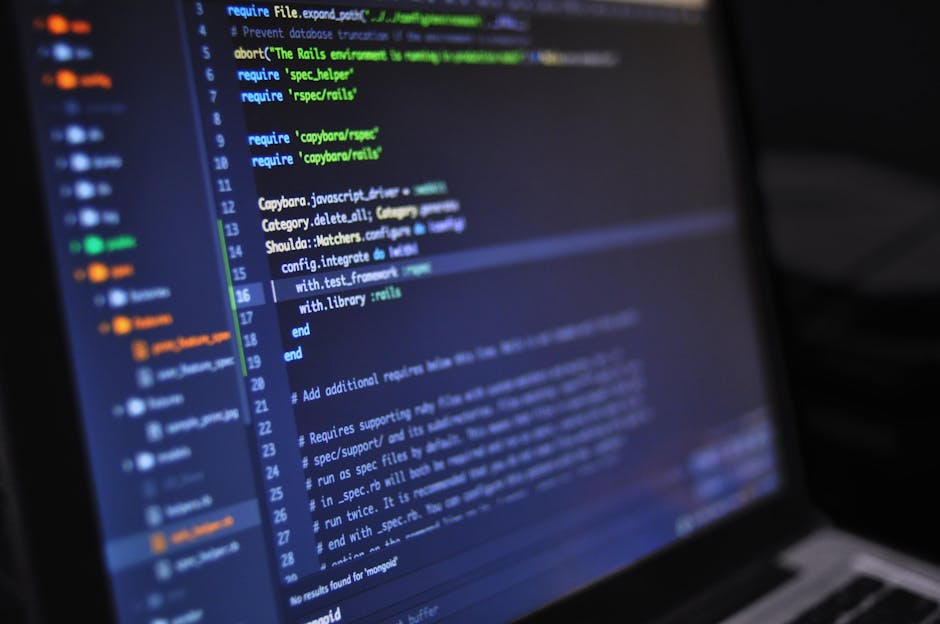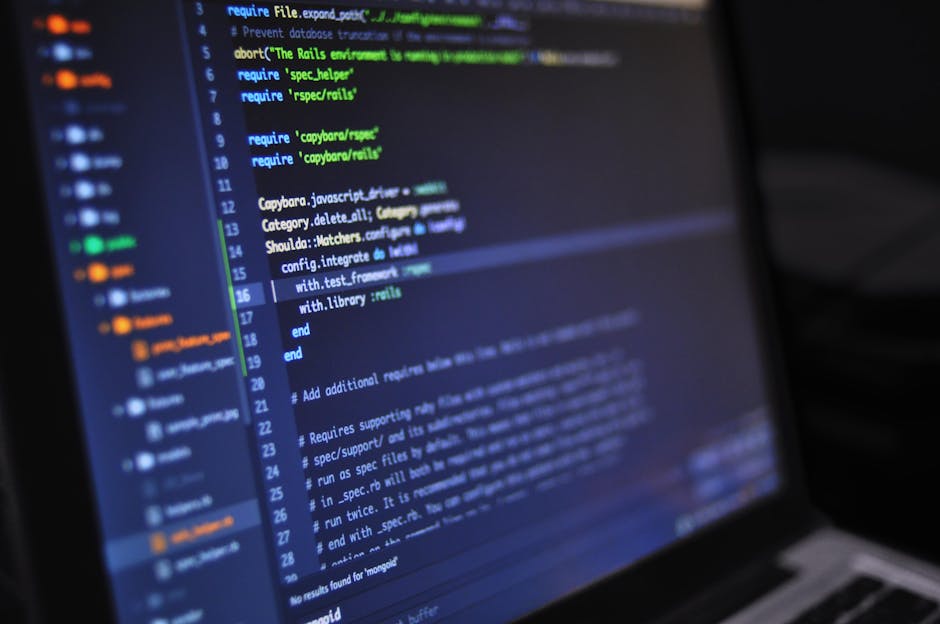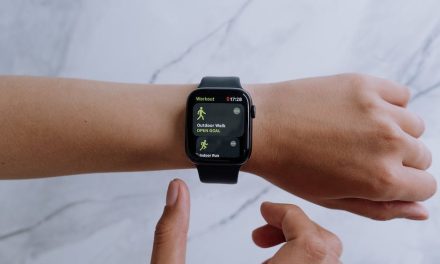Table of Contents
- Introduction
- Leveraging AI for Real-time Feedback
- Gamification in Performance Evaluation
- Virtual Reality for Skill Development
- Data Analytics for Performance Insights
- Mobile Apps for Continuous Feedback
- Automation of Performance Review Processes
- Blockchain for Transparent Performance Tracking
- Wearable Technology for Performance Monitoring
- Q&A
- Conclusion
“Transforming feedback into actionable insights with technology-driven performance reviews.”
Introduction
Revolutionizing Performance Reviews: The Impact of Technology
Performance reviews have long been a staple in the workplace, providing valuable feedback to employees and helping organizations assess and improve their overall performance. With the advancement of technology, performance reviews are being revolutionized in ways that were previously unimaginable. This article will explore the impact of technology on performance reviews and how it is changing the way organizations evaluate and develop their employees.
Leveraging AI for Real-time Feedback
Performance reviews have long been a staple in the corporate world, providing employees with feedback on their work and helping them set goals for improvement. However, the traditional annual or bi-annual review process has come under scrutiny in recent years for being outdated, time-consuming, and often ineffective. In response to these criticisms, many companies are turning to technology to revolutionize the performance review process.
One of the most significant advancements in performance reviews is the use of artificial intelligence (AI) to provide real-time feedback to employees. AI-powered tools can analyze data from various sources, such as project management software, email communications, and even employee surveys, to provide a comprehensive view of an employee’s performance. This real-time feedback allows employees to make adjustments and improvements on the fly, rather than waiting months for a formal review.
By leveraging AI for real-time feedback, companies can create a more dynamic and responsive performance review process. Employees can receive feedback on their work as soon as it is completed, allowing them to address any issues or make improvements immediately. This can lead to increased productivity, higher job satisfaction, and ultimately, better performance outcomes for both the employee and the company.
Furthermore, AI-powered performance reviews can help eliminate bias and subjectivity in the evaluation process. Traditional performance reviews are often influenced by personal biases, such as gender, race, or personality. AI, on the other hand, relies on data and algorithms to provide feedback, which can help ensure a more objective evaluation of an employee’s performance.
Another benefit of using AI for real-time feedback is the ability to track progress and set goals more effectively. AI-powered tools can analyze trends in an employee’s performance over time, identifying areas of strength and areas for improvement. This data-driven approach can help employees and managers set more realistic and achievable goals, leading to greater success and job satisfaction.
In addition to providing real-time feedback, AI can also help streamline the performance review process. Traditional reviews often involve time-consuming paperwork, meetings, and follow-up discussions. AI-powered tools can automate many of these tasks, making the review process more efficient and less burdensome for both employees and managers.
Despite the many benefits of leveraging AI for real-time feedback, there are some challenges to consider. For example, employees may be wary of AI-powered tools monitoring their every move and providing constant feedback. Companies must be transparent about how AI is being used and ensure that employees feel comfortable with the technology.
Overall, the use of AI for real-time feedback in performance reviews has the potential to revolutionize the way companies evaluate and develop their employees. By providing timely, data-driven feedback, companies can help employees improve their performance, set realistic goals, and ultimately, achieve greater success in their roles. As technology continues to advance, the possibilities for enhancing the performance review process are endless, and companies that embrace these innovations are likely to see significant benefits in the long run.
Gamification in Performance Evaluation
Performance reviews have long been a staple in the corporate world, providing employees with feedback on their work and helping organizations identify areas for improvement. However, traditional performance reviews have often been criticized for being time-consuming, subjective, and demotivating. In recent years, many companies have turned to technology to revolutionize the performance review process, with gamification emerging as a popular approach.
Gamification involves applying game design principles to non-game contexts, such as performance evaluations, to make them more engaging and interactive. By incorporating elements like points, badges, leaderboards, and rewards, gamification can motivate employees to actively participate in the performance review process and improve their performance.
One of the key benefits of gamification in performance evaluation is increased employee engagement. Traditional performance reviews are often seen as a chore by both employees and managers, leading to low participation rates and lackluster results. By introducing gamified elements, such as setting clear goals, providing real-time feedback, and offering rewards for achievements, employees are more likely to be actively involved in the performance review process.
Furthermore, gamification can help make performance evaluations more objective and data-driven. By tracking and analyzing employee performance metrics in real-time, managers can gain valuable insights into individual and team performance, identify areas for improvement, and make more informed decisions. This data-driven approach can help organizations set more realistic goals, measure progress more accurately, and ultimately improve overall performance.
Another advantage of gamification in performance evaluation is its ability to foster a culture of continuous learning and development. By providing employees with regular feedback, opportunities for skill-building, and incentives for improvement, gamification can encourage a growth mindset and a commitment to ongoing professional development. This can lead to higher employee satisfaction, increased productivity, and a more motivated and engaged workforce.
In addition to improving employee engagement, objectivity, and professional development, gamification in performance evaluation can also help organizations attract and retain top talent. In today’s competitive job market, employees are looking for companies that offer innovative and engaging performance management practices. By incorporating gamified elements into the performance review process, organizations can differentiate themselves as forward-thinking and employee-centric, making them more attractive to potential hires and reducing turnover rates.
While gamification in performance evaluation offers many benefits, it is important for organizations to approach its implementation thoughtfully and strategically. It is essential to clearly define goals, metrics, and rewards, communicate expectations effectively, and ensure that the gamified elements align with the organization’s values and culture. Additionally, organizations should regularly evaluate the effectiveness of gamification in performance evaluation, gather feedback from employees, and make adjustments as needed to ensure its continued success.
In conclusion, technology has the power to revolutionize the performance review process, and gamification is a promising approach to making performance evaluations more engaging, objective, and effective. By incorporating game design principles into performance evaluation, organizations can increase employee engagement, foster a culture of continuous learning and development, attract and retain top talent, and ultimately improve overall performance. As technology continues to evolve, the possibilities for gamification in performance evaluation are endless, offering organizations new and innovative ways to assess and enhance employee performance.
Virtual Reality for Skill Development

Performance reviews have long been a staple in the corporate world, providing employees with feedback on their work and helping them identify areas for improvement. However, traditional performance reviews have often been criticized for being time-consuming, subjective, and ineffective. In recent years, technology has been revolutionizing the way performance reviews are conducted, with virtual reality (VR) emerging as a powerful tool for skill development.
Virtual reality technology has the potential to transform the way employees receive feedback and develop their skills. By immersing employees in realistic, interactive simulations, VR can provide a more engaging and effective learning experience than traditional methods. For example, instead of simply reading about a new sales technique, employees can practice it in a virtual environment, receiving instant feedback on their performance.
One of the key advantages of using VR for skill development is its ability to create a safe space for employees to make mistakes and learn from them. In a virtual environment, employees can experiment with different approaches and techniques without the fear of negative consequences. This can help employees build confidence and improve their skills more quickly than they would in a real-world setting.
Another benefit of using VR for skill development is its ability to personalize the learning experience. VR simulations can be tailored to each employee’s specific needs and learning style, allowing them to focus on areas where they need the most improvement. This personalized approach can help employees develop their skills more effectively and efficiently.
In addition to providing a more engaging and personalized learning experience, VR can also help organizations track and measure the impact of skill development initiatives. By collecting data on employees’ performance in virtual simulations, organizations can gain valuable insights into their strengths and weaknesses. This data can be used to identify trends and patterns, allowing organizations to make more informed decisions about training and development programs.
Despite its many benefits, implementing VR for skill development can be a complex and costly process. Organizations need to invest in the necessary hardware and software, as well as training for employees on how to use the technology effectively. Additionally, creating high-quality VR simulations requires specialized skills and expertise, which may be lacking in some organizations.
Despite these challenges, the potential benefits of using VR for skill development are too significant to ignore. As technology continues to advance and become more accessible, more organizations are likely to explore the use of VR for performance reviews and skill development. By leveraging the power of VR, organizations can create a more engaging, personalized, and effective learning experience for their employees, ultimately leading to improved performance and productivity.
In conclusion, virtual reality technology has the potential to revolutionize the way performance reviews are conducted and skills are developed in the workplace. By providing a more engaging, personalized, and effective learning experience, VR can help employees improve their skills more quickly and confidently. While implementing VR for skill development may present challenges, the potential benefits far outweigh the costs. As technology continues to evolve, organizations that embrace VR for performance reviews and skill development are likely to gain a competitive edge in the marketplace.
Data Analytics for Performance Insights
Performance reviews have long been a staple in the world of human resources, providing a structured way for managers to evaluate their employees’ performance and provide feedback for improvement. However, traditional performance reviews have often been criticized for being time-consuming, subjective, and ineffective in driving real change in employee performance. In recent years, technology has begun to revolutionize the way performance reviews are conducted, offering new tools and insights that can help organizations make more informed decisions about their employees.
One of the key ways that technology is transforming performance reviews is through the use of data analytics. By collecting and analyzing data on employee performance, organizations can gain valuable insights into their workforce and identify trends and patterns that may not be immediately apparent. This data can help managers make more objective decisions about their employees’ performance, as well as identify areas for improvement and development.
For example, data analytics can help organizations identify high-performing employees who may be ready for promotion or additional responsibilities. By analyzing factors such as productivity, quality of work, and collaboration with colleagues, managers can identify employees who are excelling in their roles and may be ready to take on new challenges. This can help organizations retain top talent and ensure that employees are being recognized and rewarded for their hard work.
On the flip side, data analytics can also help organizations identify underperforming employees who may be struggling in their roles. By analyzing factors such as missed deadlines, low productivity, and poor feedback from colleagues, managers can identify employees who may need additional support or training to improve their performance. This can help organizations address performance issues before they escalate and ensure that all employees are meeting the expectations of their roles.
In addition to identifying high and low performers, data analytics can also help organizations identify trends and patterns in employee performance that may not be immediately apparent. For example, by analyzing data on employee engagement, organizations can identify factors that may be impacting employee morale and productivity, such as high turnover rates or poor communication within teams. This can help organizations address underlying issues that may be affecting employee performance and make changes to improve overall organizational effectiveness.
Overall, the use of data analytics in performance reviews can help organizations make more informed decisions about their employees and drive real change in employee performance. By collecting and analyzing data on employee performance, organizations can identify high and low performers, as well as trends and patterns that may be impacting employee performance. This can help organizations retain top talent, address performance issues, and improve overall organizational effectiveness. As technology continues to evolve, the use of data analytics in performance reviews is likely to become even more prevalent, offering organizations new tools and insights to help them make better decisions about their workforce.
Mobile Apps for Continuous Feedback
Performance reviews have long been a staple in the corporate world, providing employees with feedback on their work and helping them set goals for improvement. However, traditional performance reviews have often been criticized for being infrequent, time-consuming, and lacking in actionable feedback. In recent years, technology has revolutionized the way performance reviews are conducted, with mobile apps playing a key role in providing continuous feedback to employees.
One of the main advantages of using mobile apps for performance reviews is the ability to provide real-time feedback. Instead of waiting for an annual or semi-annual review, employees can receive feedback on their work as soon as it is completed. This immediate feedback allows employees to make adjustments and improvements in real-time, leading to better performance overall.
Mobile apps also make it easier for managers to provide feedback to their employees. With just a few taps on their smartphone, managers can provide feedback on specific tasks or projects, making the process more efficient and effective. This ease of use encourages managers to provide feedback more frequently, leading to a more engaged and motivated workforce.
Another benefit of using mobile apps for performance reviews is the ability to track progress over time. By using data analytics and performance metrics, mobile apps can provide employees with a clear picture of their progress and areas for improvement. This data-driven approach helps employees set realistic goals and track their progress towards achieving them.
In addition to providing feedback, mobile apps can also facilitate goal-setting and development planning. Employees can use the app to set goals for themselves, track their progress, and receive guidance on how to achieve those goals. This proactive approach to development planning helps employees take ownership of their career growth and development.
Furthermore, mobile apps can also facilitate communication between employees and managers. Instead of relying on face-to-face meetings or emails, employees can use the app to communicate with their managers, ask questions, and seek guidance. This streamlined communication process helps build stronger relationships between employees and managers, leading to a more collaborative and productive work environment.
Overall, the use of mobile apps for performance reviews has revolutionized the way feedback is provided in the workplace. By providing real-time feedback, tracking progress over time, facilitating goal-setting and development planning, and improving communication between employees and managers, mobile apps have transformed the performance review process into a more efficient and effective tool for employee development.
As technology continues to advance, the use of mobile apps for performance reviews is likely to become even more prevalent in the workplace. By embracing this technology and leveraging its benefits, organizations can create a culture of continuous feedback and development, leading to higher employee engagement, productivity, and overall success.
Automation of Performance Review Processes
Performance reviews have long been a staple in the corporate world, providing employees with feedback on their work and helping organizations identify areas for improvement. However, the traditional performance review process has often been criticized for being time-consuming, subjective, and ineffective. In recent years, technology has emerged as a game-changer in revolutionizing the way performance reviews are conducted.
One of the key ways technology is transforming performance reviews is through automation. By leveraging software and tools, organizations can streamline the performance review process, making it more efficient and objective. Automation can help eliminate biases and inconsistencies that are often present in traditional performance reviews, ensuring that employees are evaluated based on their actual performance rather than subjective opinions.
Furthermore, automation can also help organizations collect and analyze data more effectively. By using technology to track key performance metrics and gather feedback from multiple sources, organizations can gain a more comprehensive and accurate understanding of an employee’s performance. This data-driven approach can help identify trends and patterns that may not be apparent through traditional performance review methods, enabling organizations to make more informed decisions about employee development and career progression.
Another benefit of automating performance reviews is the ability to provide real-time feedback. Traditional performance reviews are often conducted on an annual or semi-annual basis, which can lead to delays in addressing performance issues and providing recognition for achievements. By using technology to facilitate ongoing feedback and performance monitoring, organizations can ensure that employees receive timely and relevant feedback that can help them improve and grow in their roles.
In addition to improving the efficiency and effectiveness of performance reviews, automation can also enhance the employee experience. By providing employees with access to their performance data and feedback in real-time, organizations can empower employees to take ownership of their development and career progression. This transparency can help build trust and engagement among employees, leading to higher levels of job satisfaction and retention.
Furthermore, automation can also help organizations align performance reviews with their broader talent management strategies. By integrating performance review data with other HR systems, such as recruitment, training, and succession planning, organizations can create a more holistic view of their workforce and make more strategic decisions about talent development and deployment. This integrated approach can help organizations identify high-potential employees, address skill gaps, and ensure that they have the right people in the right roles to drive business success.
Overall, the automation of performance review processes is revolutionizing the way organizations evaluate and develop their employees. By leveraging technology to streamline the performance review process, organizations can improve the objectivity, efficiency, and effectiveness of their performance reviews, while also enhancing the employee experience and aligning performance reviews with broader talent management strategies. As technology continues to evolve, the impact of automation on performance reviews is only expected to grow, making it an essential tool for organizations looking to drive performance and engagement in the digital age.
Blockchain for Transparent Performance Tracking
Performance reviews have long been a staple in the corporate world, providing employees with feedback on their work and helping organizations identify areas for improvement. However, traditional performance reviews have often been criticized for being subjective, biased, and ineffective. In recent years, technology has been revolutionizing the way performance reviews are conducted, with the introduction of blockchain technology offering a new and innovative approach to performance tracking.
Blockchain technology, most commonly associated with cryptocurrencies like Bitcoin, is a decentralized and secure system that allows for the transparent and immutable recording of transactions. This technology has the potential to transform the way performance reviews are conducted by providing a secure and transparent platform for tracking and evaluating employee performance.
One of the key benefits of using blockchain technology for performance tracking is the increased transparency it offers. With traditional performance reviews, there is often a lack of transparency in the evaluation process, leading to concerns about bias and favoritism. By using blockchain technology, all performance data is recorded on a secure and transparent platform, making it easy to track and verify the accuracy of performance evaluations.
In addition to increased transparency, blockchain technology also offers improved security for performance data. Traditional performance reviews are often conducted using paper-based or electronic systems that are vulnerable to hacking and data breaches. By using blockchain technology, performance data is stored in a secure and encrypted format, reducing the risk of unauthorized access and ensuring the integrity of the data.
Furthermore, blockchain technology can also help to streamline the performance review process by automating the collection and analysis of performance data. By using smart contracts, performance goals and metrics can be automatically tracked and evaluated, reducing the need for manual data entry and minimizing the potential for human error.
Overall, the use of blockchain technology for performance tracking has the potential to revolutionize the way performance reviews are conducted, offering increased transparency, security, and efficiency. By leveraging this innovative technology, organizations can ensure that performance evaluations are fair, objective, and accurate, leading to improved employee engagement and productivity.
In conclusion, the impact of technology on performance reviews cannot be understated. Blockchain technology, in particular, offers a new and innovative approach to performance tracking that has the potential to revolutionize the way organizations evaluate employee performance. By leveraging the transparency, security, and efficiency of blockchain technology, organizations can ensure that performance reviews are conducted in a fair and objective manner, leading to improved employee engagement and productivity. As technology continues to evolve, it is clear that the future of performance reviews will be shaped by innovative solutions like blockchain technology.
Wearable Technology for Performance Monitoring
Performance reviews have long been a staple in the workplace, providing employees with feedback on their work and helping organizations identify areas for improvement. However, traditional performance reviews have often been criticized for being time-consuming, subjective, and ineffective. In recent years, technology has begun to revolutionize the way performance reviews are conducted, with wearable technology playing a key role in monitoring and evaluating employee performance.
Wearable technology, such as fitness trackers and smartwatches, has become increasingly popular in recent years, with many people using these devices to track their physical activity, monitor their health, and even improve their sleep. In the workplace, wearable technology is being used to monitor employee performance in real-time, providing managers with valuable data on how employees are performing on a day-to-day basis.
One of the key benefits of using wearable technology for performance monitoring is the ability to collect objective data on employee performance. Traditional performance reviews are often based on subjective assessments by managers, which can be influenced by biases and personal opinions. By using wearable technology to track metrics such as productivity, efficiency, and even stress levels, organizations can gather more accurate and reliable data on how employees are performing.
Another advantage of using wearable technology for performance monitoring is the ability to provide employees with real-time feedback. Instead of waiting for an annual performance review to receive feedback on their work, employees can receive instant feedback on their performance through their wearable devices. This can help employees identify areas for improvement and make adjustments to their work habits in real-time.
Furthermore, wearable technology can also help organizations identify trends and patterns in employee performance. By analyzing the data collected from wearable devices, organizations can identify common challenges or issues that employees are facing, allowing them to implement targeted interventions to address these issues. For example, if a large number of employees are experiencing high levels of stress, organizations can implement stress management programs or provide additional support to help employees cope with their workload.
Despite the many benefits of using wearable technology for performance monitoring, there are also some challenges that organizations need to consider. One of the main concerns is around data privacy and security, as wearable devices collect sensitive data on employees’ activities and behaviors. Organizations need to ensure that they have robust data protection measures in place to safeguard this information and comply with data privacy regulations.
In conclusion, wearable technology has the potential to revolutionize the way performance reviews are conducted in the workplace. By providing objective data on employee performance, real-time feedback, and insights into trends and patterns, wearable technology can help organizations improve the effectiveness of their performance management processes. However, organizations need to be mindful of data privacy and security concerns when implementing wearable technology for performance monitoring. Overall, the impact of technology on performance reviews is undeniable, and organizations that embrace these innovations are likely to see significant improvements in employee performance and organizational success.
Q&A
1. How can technology revolutionize performance reviews?
Technology can streamline the performance review process, provide real-time feedback, and track employee progress more effectively.
2. What are some benefits of using technology for performance reviews?
Benefits include increased efficiency, improved accuracy, better data analysis, and enhanced employee engagement.
3. How can technology help with setting and tracking goals during performance reviews?
Technology can help set SMART goals, track progress towards those goals, and provide reminders and notifications to keep employees on track.
4. What role does data analytics play in revolutionizing performance reviews?
Data analytics can provide insights into employee performance trends, identify areas for improvement, and help make more informed decisions during performance evaluations.
5. How can technology improve the feedback process during performance reviews?
Technology can facilitate real-time feedback, enable peer-to-peer feedback, and provide a platform for ongoing communication between managers and employees.
6. What are some challenges of implementing technology for performance reviews?
Challenges may include resistance to change, data privacy concerns, integration with existing systems, and ensuring all employees have access to and are comfortable using the technology.
7. How can technology help with employee development and growth during performance reviews?
Technology can provide personalized development plans, recommend training opportunities, and track progress towards skill development and career advancement.
8. What are some best practices for incorporating technology into performance reviews?
Best practices include training employees on how to use the technology, ensuring data security and privacy, soliciting feedback from employees on the technology’s effectiveness, and regularly updating and improving the technology based on feedback and performance review outcomes.
Conclusion
Technology has revolutionized performance reviews by making them more efficient, transparent, and data-driven. With the help of tools like performance management software and data analytics, organizations can now provide more accurate and timely feedback to employees, leading to improved performance and productivity. Overall, technology has had a significant impact on the way performance reviews are conducted, ultimately benefiting both employees and organizations.





